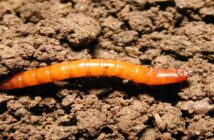With the dry weather forecast to last well into April, it is one more complication for maize weed control, says David Peach of Certis Belchim.
He notes the six weeks post crop emergence are critical to forage maize crop performance, as plants are so sensitive to competition from weeds for water and nutrients.
If left unchecked during this period, yield losses can reach 50%. “This makes a pre-emergence herbicide important, as it holds weeds back and limits the impact of any delay in post-emergence spraying. It also sensitises target weeds and improves efficacy of follow up sprays,” he says.
He adds it is important that growers know which species are present, as this can have a bearing on herbicide choice once the crop is in the ground. Field history is vital, those growing the crop on rented land should do all they can to find out.
He considers the most damaging species as polygonums such as knotgrass, black nightshade, mayweed, orache and fat-hen. Blackgrass and annual meadow grass are also problematic in some regions.
A holding spray can buy you a bit of time early on. That allows growers to deal with what is left before any difficult weeds get away.
Design your herbicide programme
He sees either straight pendimethalin or Wing-P (pendimethalin + dimethenamid P) pre-emergence as solid, broad-spectrum foundations to a maize weed control programme.
Following a pre-emergence spray, he advises walking the crop regularly to see what weeds come through. “Growers will inevitably have some broad-leaved weeds, and in some situations, growers will need a herbicide mix with activity on grassweeds.
“A three-way mix of Osorno (mesotrione), Fornet 6 OD (nicosulfuron) and Diva (pyridate) covers all bases, with the three actives complimenting each other well. Mesotrione boosts residual control, nicosulfuron is effective on grassweeds and a range of broad-leaved weeds, and Diva offers broad-spectrum contact activity. In Certis Belchim trials, pyridate in a three-way mix has shown to improve control of a wide range of competitive weeds, compared to mesotrione and nicosulfuron alone, particularly cranesbill, mayweed, and fat hen.”
The company’s work has also shown that pyridate is a safer addition to the tank than dicamba, which when applied in hot conditions, can check the crop significantly.
Finally, apply herbicide mixtures when weeds are small to get the best control. In most scenarios, there is usually only one post-emergence hit.
Adapt to the season
With it being so dry, he says growers need to bear in mind pendimethalin is relatively insoluble, so for those faced with low soil moisture, it might be worth delaying your first spray.
Growers have the option of going early post-emergence, adding a contact herbicide like Diva to a residual like pendimethalin to take out any emerged weeds. This mix needs to be applied from the two true leaf stage of the crop. “If taking this approach, it is best to follow with an Osorno + Fornet 6 OD + Diva mix where you have broad-leaved weeds and grassweeds, or just Osorno + Diva where broad-leaved weeds are the only target,” he says.
When using any mesotrione product, he warns it is important to check product labels for following crop restrictions in both autumn and spring after the season of application.




